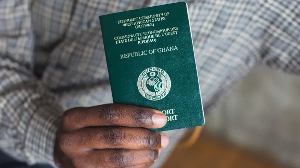Highlife plays a key part in the musical heritage of Africa and its influence can be heard in a variety of modern-day styles.
In Ghana, they have added rap and called it Hiplife. In Nigeria, you have Afrobeat or Juju, in Sierra Leone, Palm-wine music and, of course, there is Congolese rhumba and soukous. All have their roots in "hilife".
But essentially Highlife is associated with a pre-independence sound that arose in the 1950s incorporating elements of swing, jazz and Cuban rhythms with the emerging guitar styles of West Africa.
Its roots, according to Ghanaian musicologist John Collins, are in the small portable instruments carried by sea-farers like the Liberian "Kru" mariners.
The Kru travelled the West African coast even before Europeans arrived and were later employed on British and American steam-ships.
They played accordion, concertina, harmonica, penny whistle, banjo, mandolin and especially the Spanish guitar with which they developed the oppositional thumb and finger-plucking style.
By the 1950s elite dance orchestras lead to a rapid expansion of bands. Names such as the great ET Mensah of Ghana rose up.
Now the BBC is staging a special concert in Nigeria bringing some of the big names of the 1950s and 1960s onto one stage.
It seems that Highlife is as popular as ever. What do you think?
BBC Africa Live is asking:
Is Highlife still the ultimate pan-African music?
Or is it giving way to better and more modern rhythms?
Join the debate this Wednesday 29 September at 1630 GMT and 1830 GMT.
Click here and use the form to send us your comments












